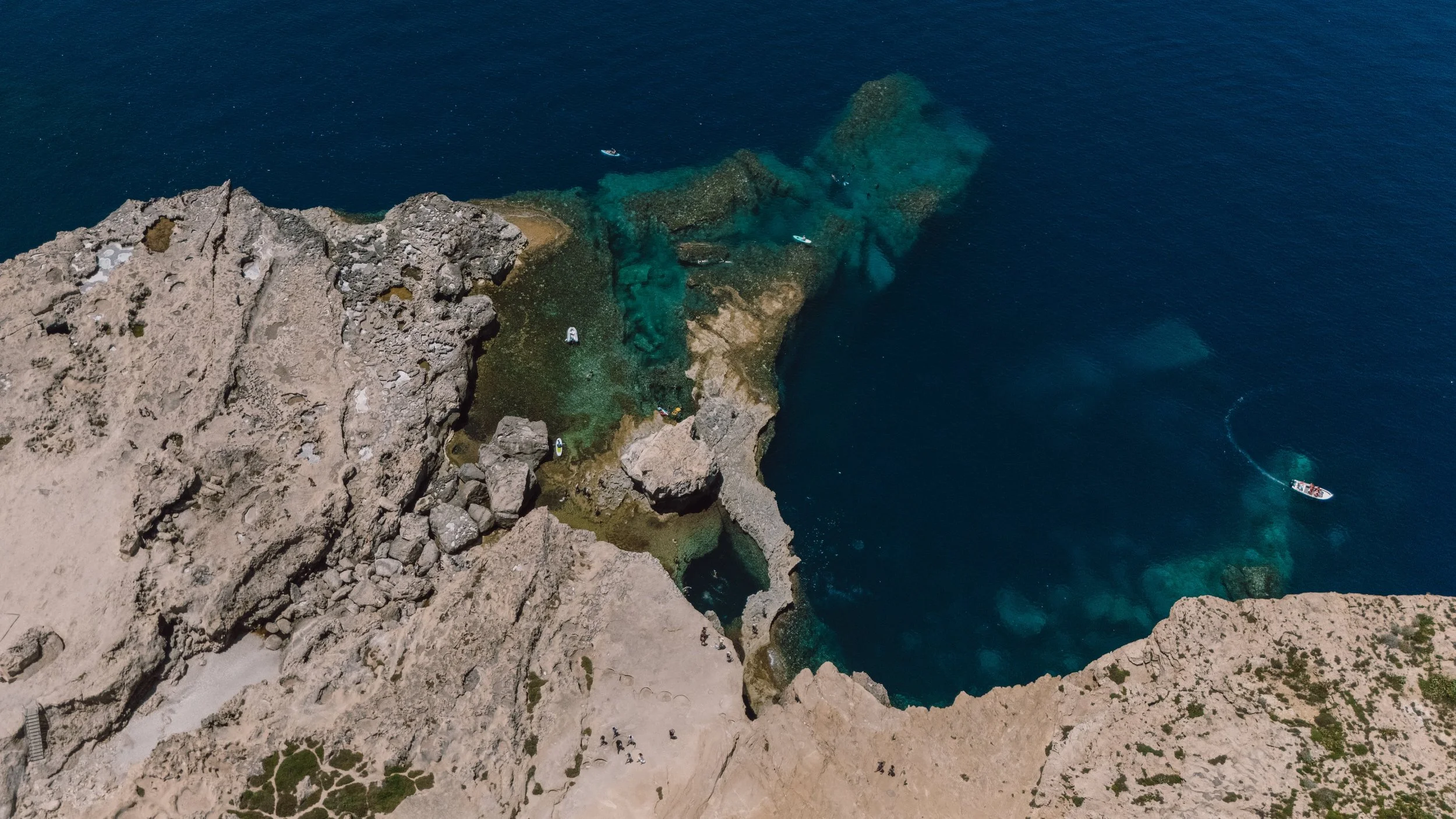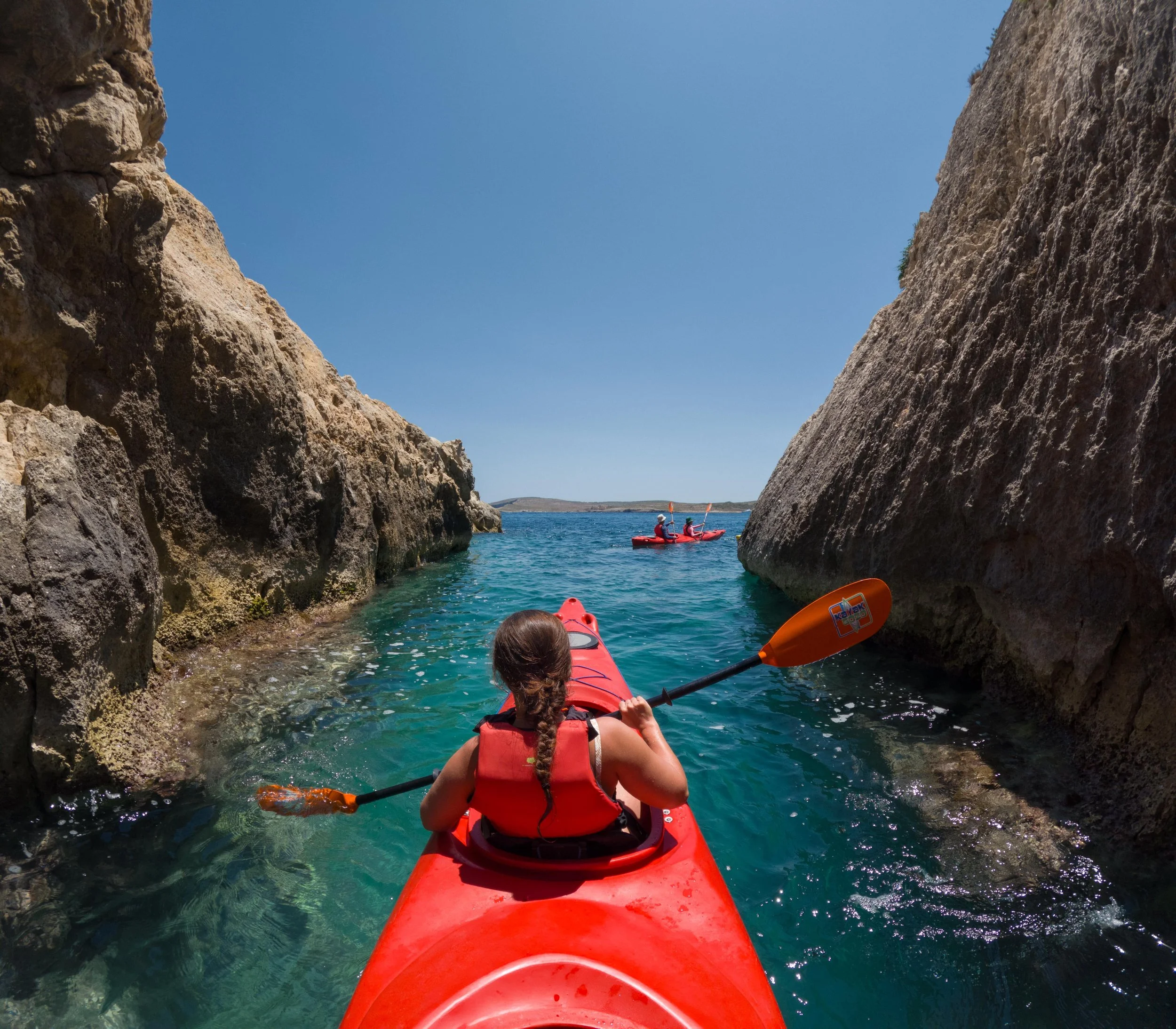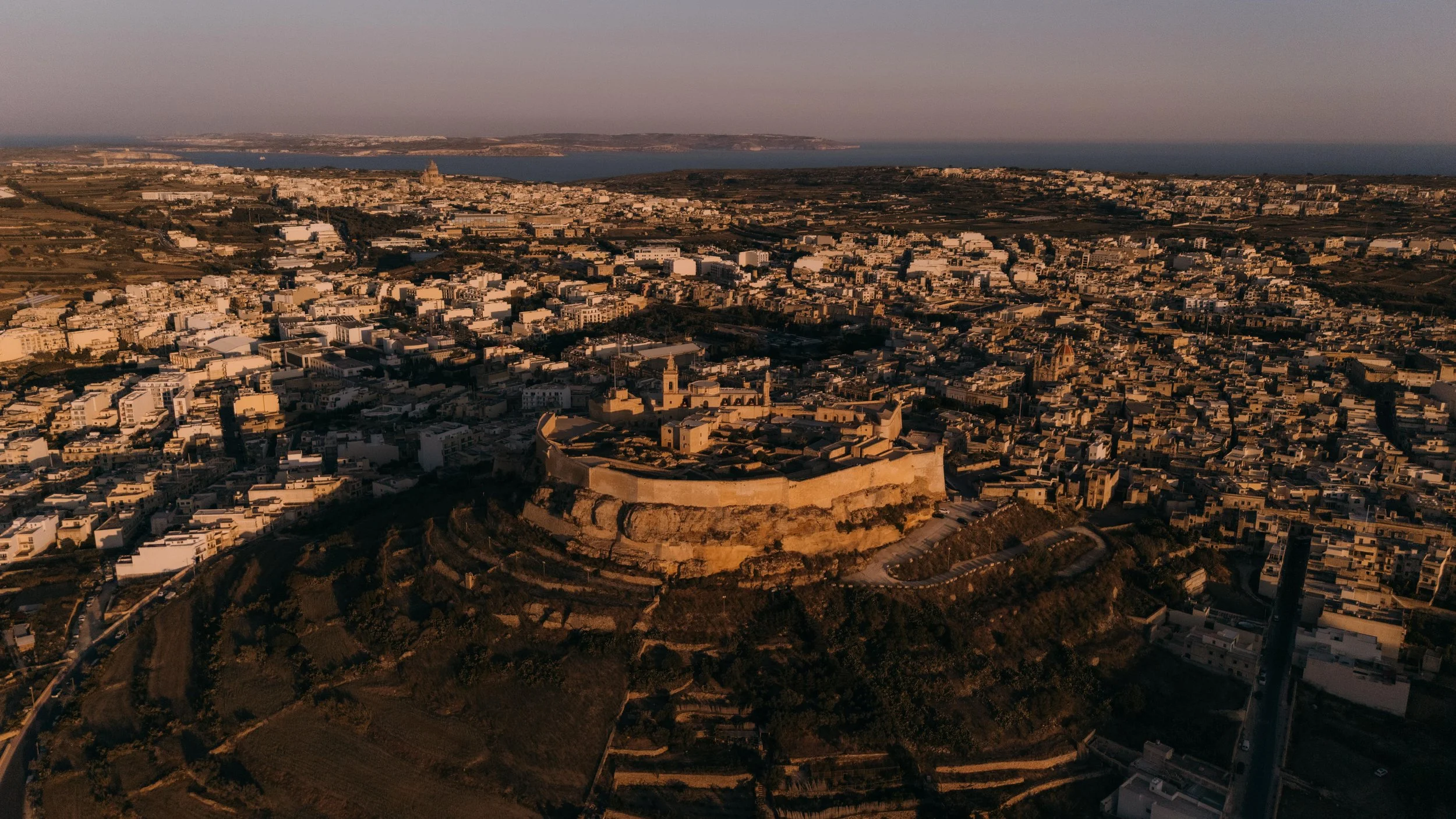This post may contain affiliate links, which means if you purchase through these links, we may receive a small commission at no cost to you. Thank you for supporting our website.
In Partnership with Visit Gozo. All opinions are our own.
This complete Gozo travel guide has everything you need to plan the perfect trip, from how to get there and get around, to when to go, what it costs, and how to visit responsibly.
Based on conversations with locals and our own experience, you’ll find practical, authentic advice on whether Gozo is worth visiting, how it compares to Malta, tips for driving and public transport, where to stay, what to eat and drink, and how to respect local life while you’re here.
Whether you’re dreaming of beautiful beaches, ancient temples, or Gozitan ftira fresh from a village bakery, this guide will help you travel smarter, slower, and more sustainably.
Contents
1. Introduction
2. How to use this guide
3. Is Gozo worth visiting?
4. Gozo vs Malta - What’s the difference?
5. How to get to Gozo
6. How to get around Gozo
7. Driving in Gozo
8. Is Gozo safe to visit?
9. What is the currency and language on Gozo?
10. When is the best time to visit Gozo?
11. How to be a responsible visitor on Gozo?
12. Is Gozo expensive to visit?
13. Best things to do on Gozo
14. Where to eat on Gozo
15. Where to stay on Gozo
Welcome to our ultimate guide to Gozo, Malta’s smaller, quieter and more slow-paced sister island. Gozo offers a much more relaxing experience compared to lively Malta and is ideal for those dreaming of hidden coves, golden beaches and wandering through sleepy villages while meeting friendly locals.
If Gozo is not yet at the top of your list of places to visit in Europe, it should be. This guide will help you plan a memorable trip to Gozo, whether you come for a day trip, a week or longer. You will find everything you need to know, including how to get around, the best things to do, where to eat and stay, and how to help keep the island’s charm intact by being a responsible visitor.
Gozo is perfect for nature lovers, foodies, history fans and adventure seekers alike. From exploring the ancient Ggantija Temples to diving through shipwrecks, kayaking in clear water coves to savouring konserva on freshly baked sourdough bread in an olive grove, you will discover how to slow down and enjoy island life here. You may soon see why so many people fall in love with Gozo.
How to use this guide
Use the contents table above to jump straight to the sections you need, whether that is deciding if Gozo is right for you, figuring out how to get here, or planning your perfect week on the island.
This guide is based on real experiences and is designed to help you plan a flexible and responsible trip. Feel free to customise the itinerary based on your interests and travel pace. Whether you want to focus more on relaxing beach days, exploring cultural sites, or enjoying local food and festivals, this guide can help you plan a trip that suits you best.
Is Gozo worth visiting?
Gozo has so much to offer and is well worth a visit. With a slower pace than its lively sister Malta, it boasts beautiful beaches, charming villages and rolling countryside. Gozo feels unspoilt and untouched by mass tourism.
Waking up to birdsong in the morning and hearing it again as the sun sets, you quickly fall into the island’s natural rhythm, slowing down your urge to rush and instead savouring fresh food, friendly people and spectacular scenery.
While many people only visit Gozo for the day, there is so much more to see. If you can stay longer, we highly recommend it. Spend your days exploring coastal walks, snorkelling in clear waters and eating at family-run restaurants. Find hidden sunset spots away from the crowds and enjoy the peaceful side of Gozo.
Gozo vs Malta - What’s the difference?
It depends on the kind of escape you’re dreaming of. If you love lively beach bars, buzzing nightlife, shopping and lots of entertainment, then Malta might be just right for you.
But if you’re after a slower pace, natural beauty and a taste of true island life, then Gozo is the place to be. Think peaceful countryside, hidden coves, coastal walks and friendly locals welcoming you with a smile.
You do not have to choose just one, as you will fly into Malta International Airport, making it easy to experience the best of both islands in one trip.
How to get to Gozo
While there are no direct flights to Gozo, you will soon find that this is part of its charm. When a place takes a little more effort to reach, it is usually worth it. There are two main options for getting to Gozo: either take the ferry from Cirkewwa terminal in northwest Malta, or the fast ferry from Valletta, which is closer to the airport.
The easiest and cheapest option is to take the ferry from Cirkewwa to Mgarr Harbour on Gozo. This route avoids traffic through Valletta, and the Cirkewwa ferry has a more frequent service, with ferries running every 30 to 45 minutes throughout the day. The drive to the ferry terminal takes about one hour, and the crossing itself takes around 25 minutes. This is also the best choice if you have hired a car in Malta and wish to take it over to Gozo.
The cost is €11.05 for a car and €4.65 per person, and you only pay for the return journey. On your way to Gozo, simply join the queue for boarding, and on the way back, you pay at the toll before boarding the ferry. This is the main ferry used by locals and visitors alike and can also be used by foot passengers without a car. If you do not hire a car, you can easily reach the terminal by taxi or bus.
If you plan to spend a night or two in Valletta and then visit Gozo, you can book the fast ferry, which is for passengers only. Tickets must be booked in advance and there is often an online discount, with a return ticket costing around €12.00. Do check the weather though, as the fast ferry does not run in stormy conditions and only operates during daylight hours.
TOP TIP | Get a Tallinja Card to save money on public transport. This reusable card can be topped up and is valid across Malta and Gozo. For example, the Explore Adult Card gives you unlimited travel for seven days and costs €25.
How to get around Gozo?
Once you arrive on Gozo, you’ll find it easy to get around, as it’s a relatively small island, only 9 miles long, and it takes around 20 to 30 minutes to drive across, depending on traffic.
If you’re happy driving, hiring a car is the best way to see the island. It gives you the freedom to find quiet beaches, stop at scenic viewpoints and reach parts of Gozo beyond the usual spots. where you can discover local treasures away from the day-trippers.
Don’t worry if you don’t want to drive; there are a few other ways to get around Gozo. The hop-on hop-off sightseeing bus is a popular choice and covers most of the main sights and towns. You can catch the bus from Mgarr harbour.
For the more adventurous, quad bikes are another option. If you choose to hire one, make sure it has proper safety features like a roll cage. We did see a few accidents involving quads, so it’s worth choosing a reputable company and taking it slowly.
The most affordable way to get around Gozo is by using the public buses. Several routes connect the island, mostly passing through the capital, Victoria, where the main bus terminal is located. You can use your Tallinja Card here just like in Malta. Check the current bus timetables for Gozo online by selecting ‘view all bus routes’, and then choosing Gozo.
Taxis are also easy to find near the ferry terminal and in Victoria, or you can book ahead for longer journeys or day trips.
Driving in Gozo
If you’re not a confident driver, then driving in Malta and Gozo might not be the best idea. Driving in Gozo can be challenging at times. While it might be easy to get to most places on the island quickly, some of the local driving styles can be unpredictable and remind us a bit of driving in Morocco or Egypt.
If you decide to hire a car, make sure to choose a reliable rental company and check the deposit and insurance terms carefully. We found that some companies, such as Sicily by Car, charge high deposits up to €1800, which can be frustrating. We hired a car at the airport in Malta as it was easier and drove it across on the ferry.
TOP TIP | Get out excess insurance and check the deposit amount before making the booking
A few tips for driving in Gozo:
Be patient with other drivers and expect cars to pull out without warning.
Drive on the left-hand side of the road.
Some drivers may not always follow traffic rules, so stay alert and watch out at junctions.
Many roads in towns are one-way and can be narrow, so slow down and take your time.
Drive carefully and allow extra time for unexpected stops.
Watch out for pedestrians and cats on the road.
Some streets have resident-only parking zones, so always check signs before leaving your car.
Parking in Gozo
Parking in Gozo is a bit more relaxed compared to the busier parts of Malta. In most towns and villages, you’ll find free street parking, but in some areas, such as Victoria and popular beaches like Ramla, can get busy, especially in summer or during festivals.
When parking, check for signs or painted lines on the road. White spaces usually indicate free public parking, whereas blue spaces may be reserved or require a permit. If there are yellow or red lines on the road, parking is not allowed, and you may receive a fine if you park there.
Some areas also have time restrictions. If you’re unsure, ask a local for help and keep an eye out for temporary signage during festivals.
Is Gozo safe to visit?
Gozo is a very safe destination to visit, with welcoming locals and a peaceful atmosphere. In 2024, Gozo saw a 23% drop in crime reports and recorded its lowest theft rates in the past two decades. While theft from homes has decreased, it can still occasionally occur around hotels, bars and restaurants, but remains very rare.
Act as you would when visiting any other country: stay aware of your surroundings and use common sense. When swimming or snorkelling, be mindful of strong currents or sudden weather changes, and avoid swimming alone. If you’re exploring the coastline, always keep a safe distance from cliff edges, especially when it’s windy.
Safety tips for Gozo
Keep valuables secure and out of sight. Stay alert in crowded areas, including hotels, restaurants and bars, to avoid pickpocketing.
Drive slowly and carefully, watching for pedestrians and drivers who may pull out unexpectedly.
Check the local weather forecast and tide times before swimming or snorkelling.
Avoid swimming alone and be cautious of strong currents. Several beaches on Gozo have lifeguards during the summer months (June to September).
Stay on marked paths and avoid getting too close to cliff edges.
Make a note of the local emergency number, which is 112 in both Malta and Gozo.
What is the currency and language on Gozo?
In Gozo and Malta, the main currency is the euro. Cards are widely accepted across the islands, but it’s worth carrying some cash for small transactions, especially in local markets and village shops. We highly recommend using a card that avoids international fees, such as Monzo or Revolut, as they are a great way to manage your money while abroad.
Maltese and English are the official languages of Gozo and Malta, and most locals speak both fluently. It’s still worth learning a few Maltese phrases as locals really appreciate visitors making the effort.
Basic Maltese phrases
Hello – Helow (pronounced heh-low)
Good morning – Bongu (pronounced bonn-joo)
Good evening — Bonswa (pronounced bonn-swa)
Goodbye – Caw (pronounced chow)
Thank you – Grazzi (pronounced grah-tsee)
Yes – Iva (pronounced eee-va)
No – Le (pronounced lehh)
How are you? — Kif int? (pronounced kiff-nt)
When is the best time to visit Gozo?
Thanks to its mild Mediterranean climate, Gozo is a year-round destination, with each season offering something unique. For warm weather and fewer visitors, late spring and early autumn are some of the best times to visit.
March to May (Spring)
Spring is one of the best times to visit Gozo, as the island is quieter but full of life. Most days are warm but not too hot, and the countryside turns green and bursts with wildflowers. Spring is perfect for cycling, hiking and kayaking adventures. Sea temperatures start to warm up in April and May (18–22°C) with usually calm waters for diving and snorkelling. Expect highs around 24°C and lows of 10°C, with little chance of rain.
June to August (Summer)
Summer is peak season on the island, bringing long sunny days and warm sea temperatures ideal for swimming, snorkelling and boat trips. In recent years, Europe has experienced hotter summers, and when we visited Gozo in June, temperatures regularly reached above 32°C. Summer is also festival season, with vibrant local events and village feasts. If you plan to visit during these months, make sure to book accommodation in advance.
September to November (Autumn)
Autumn is a favourite among locals. Visitor numbers drop, but air and sea temperatures stay warm, ideal for swimming and diving. Temperatures generally stay around the mid-20s, with calm waters and perfect conditions for exploring the island’s villages, beaches and countryside.
December to February (Winter)
Winter is the quietest time on the island. While it is cooler and wetter, Gozo rarely gets very cold, with average highs of around 16°C. It is a good choice for travellers looking for lower prices and festive local events like Christmas markets and the Nadur Carnival. You can still enjoy outdoor activities such as hiking and cycling.
How to be a responsible visitor in Gozo
As visitors to someone else’s home, it’s important to treat it with care. Gozo’s beauty lies in its unspoilt landscapes, welcoming locals, and laid-back way of life. We have a responsibility to respect the island’s environment and culture so it stays special for everyone. Here are some simple ways to be a responsible visitor.
🌱 Respect the Environment
Gozo’s natural beauty is delicate, especially along its cliffs, beaches, and marine habitats. When you visit beaches or nature spots, always take your rubbish with you and never leave litter behind. Stick to marked trails when hiking to protect plants and reduce erosion.
🌱 Respect daily life on Gozo
Be mindful not to block driveways or disrupt local routines. A simple smile and a few Maltese words can help you connect with locals and show your respect. Keep in mind that while you’re on holiday, Gozo’s residents are going about their everyday lives.
🌱 Protect Marine Life
If you’re swimming, snorkelling, or diving, take care not to touch or step on corals or sea creatures. Use reef-safe sunscreen to help keep the underwater world thriving.
🌱 Help Protect Nesting Turtles
Some beaches on Gozo are nesting spots for turtles. If you dig holes or build sandcastles, flatten them before you leave. Keep noise and bright lights to a minimum at night, as these can disturb nesting turtles. Red lights are a better choice if you need a torch.
🌱 Respect Local Culture and Traditions
Gozitans are proud of their traditions and village events. When visiting festas or religious celebrations, dress modestly and behave respectfully. Support the community by eating at family-run restaurants and buying from local markets and artisan shops.
🌱 Travel Slow and Stay Longer
Rather than rushing through, slow down and soak up Gozo’s peaceful atmosphere. Spend more time in each village, get to know local people, and look for quieter spots away from the crowds. Travelling slowly helps protect Gozo’s charm and supports local life.
🌱 Dress respectfully in churches
Maltese society values modesty, so dress appropriately when visiting churches. Take off hats and sunglasses and keep a shawl or scarf handy to cover your shoulders if needed. There are more than 359 churches across Malta and Gozo, so you’re never far from one worth visiting.
Is Gozo expensive to visit?
Gozo is an affordable destination that caters to all budgets, from backpackers to luxury travellers. We were pleasantly surprised by how reasonable food and accommodation can be.
If you’re planning a budget-friendly trip, you’ll find affordable hotels, hostels and B&Bs. Eating fresh local produce, dining at family-run restaurants and using public transport will help keep costs down. Getting a Tallinja Card is worth it if you plan to stay for a week or more, as it offers unlimited bus travel at a low cost.
A meal at a local restaurant costs around £8–£13 pp
A budget guesthouse or hostel from £35–£50 per night
Tallinja Explore Card about €21 (£18) for 7 days of unlimited bus travel
Best things to do in Gozo?
There are many wonderful things to do on Gozo, from diving through the Blue Hole to watching the sunset over the Citadel.
Outdoor activities such as kayaking, cycling, hiking, and swimming can be enjoyed all over the island, while more relaxing options include spa days, boat trips, and wandering around historic sites. Gozo is perfect for nature lovers, foodies, history fans, and adventure seekers alike.
Where to eat in Gozo?
You’ll be spoiled for choice with the number of quality food options on Gozo. We’re pretty sure we had the best pizza of our lives here, and no, that’s not much of an exaggeration; it might just be a fact. There are cute cafés, sea-view restaurants, family-run traditional bakeries and, of course, plenty of fresh seafood.
We’ve listed our favourites on the island below, and if you try any we’ve missed, let us know in the comments!
Kaputa Restaurant, Qala
We loved this spot during the Nadur feast evening. They serve excellent pizzas, cocktails opposite the church square, where birdsong fills the air.
Debono Bakery, Ghajnsielem
A family-run bakery with nearly a century of history, passing down their sourdough starter. We picked up traditional Gozitan loaves and ftira here, and it tastes so good with konserva!
Taste of Gozo Tour
We would highly recommend joining a guided tasting tour with Leanne from Taste of Gozo and sampling farm-fresh gbejna (sheep cheese), olive oil, sourdough bread, conservas, handmade liqueurs, and locally harvested sea salt.
Vanilla+ Ice Cream, Victoria or Xlendi
Delicious artisanal ice cream made fresh daily. Vanilla+ uses high-quality ingredients for their ice cream and quickly became a favourite for us, especially their Greek yoghurt flavour. They have shops located in both Victoria, next to the bus terminal and in Xlendi.
Terrazzo Restaurant & Beach Bar, Xlendi Bay
Terrazzo is one of the best places to eat in Xlendi, watch the sunset over the cliffs in the bay. Some nights you can enjoy live music and the fairy lights add to the relaxing, cosy atmosphere.
Block Hotel Rooftop Bar & Restaurant, Xlendi
A casual rooftop spot known as Above serve signature cocktails, tacos and is perfect for a laid-back meal and drink. The Block also has the Front (downstairs), which is known for holding events such as karaoke nights and serving really good burgers, salads, wraps, tapas, and so much more.
Where to stay in Gozo
From local farm stays and luxury hotels to affordable hostels and beautiful villas, Gozo offers a wide range of places to stay. You can choose city-centre accommodation or sea-view rooms, and since everything is relatively close on Gozo, where you stay can shape the kind of escape you want.
Read our in-depth guide to campsites, hotels and unique accommodation and the best places to stay in Gozo.
This easy-to-use map below will help you find your dream stay in Gozo. Select your dates in the search bar below and compare the best prices across the main booking sites to show you the best deals.
READ MORE | The best places to stay on Gozo
Plan your next adventure
If you book through our links, you help support our website at no extra cost to you - thank you!








































